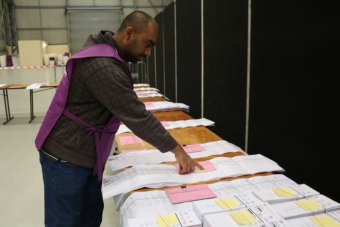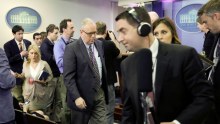Election gridlock behind Standard & Poor's negative ratings action
Posted
Ratings agency Standard & Poor's said Australia's parliamentary gridlock was behind its decision to downgrade the country's credit rating outlook.
S&P yesterday revised Australia's credit rating outlook to negative, but reaffirmed the country's AAA credit rating for now.
In a question and answer session with journalists this morning, S&P's associate director for sovereign ratings, Anthony Walker, outlined more clearly that the political situation has slowed down the process of returning the federal budget to surplus.
"What we've seen recently is that the parliamentary gridlock, particularly in the Senate, has slowed down this progress and after this week's election we don't see that improving any time soon," he said.
The move is an indication that a credit rating cut could be on the way, which might be followed by higher interest rates for the Commonwealth Government, as well as several states and the major banks.
S&P's demands budget balance by early 2020s
Anthony Walker said the agency will be keeping a close eye on the legislature, to see if a cut is warranted in the coming six to twelve months.
"If we believe that the Parliament is unlikely to narrow the budget deficit, get a balanced position in the early 2020s, particularly June 30th 2021, there could be some action," he said.
We will continue to monitor the Government's ability to pass legislation, either with revenue savings or expenditure savings, through both houses of Parliament."
The agency said Australia's record housing debt was among its biggest concerns, but it said the Federal Government's debt was comparatively low.
S&P's said this moderated the country's strengths, which it cited as strong economic institutions, a creditworthy banking system, and "flexible labour and product markets".
The agency said it was also concerned by the Federal Government's predictions for the iron ore price, which it forecast at $US55 per tonne in the last budget.
S&P's expects the iron ore price to be almost $US20 per tonne below this figure, and the Government's own resources forecasting agency has now also lowered its expectations.
Topics: economic-trends, federal-government, federal-election, budget, federal-elections, australia








